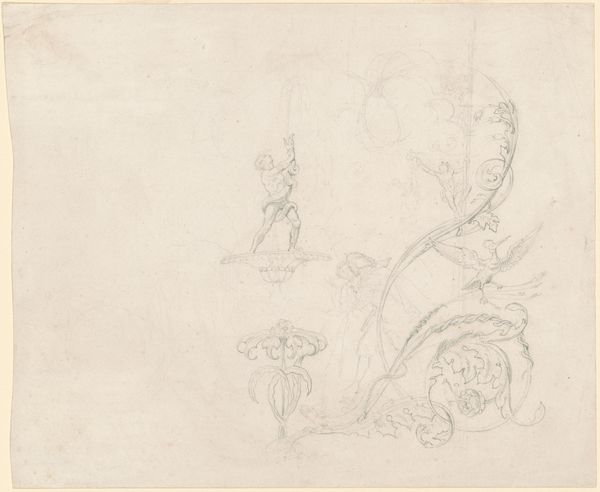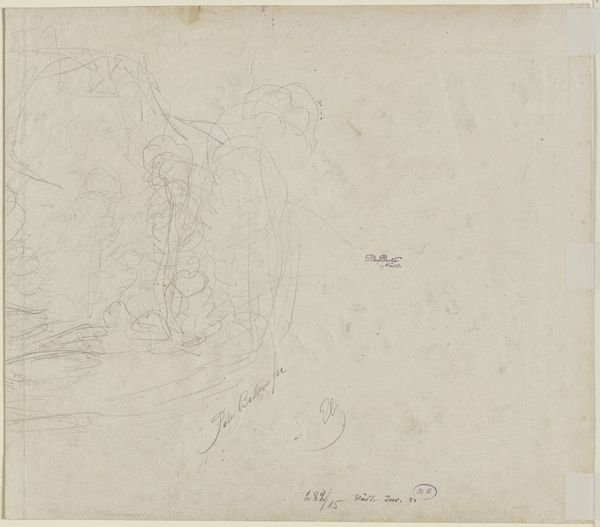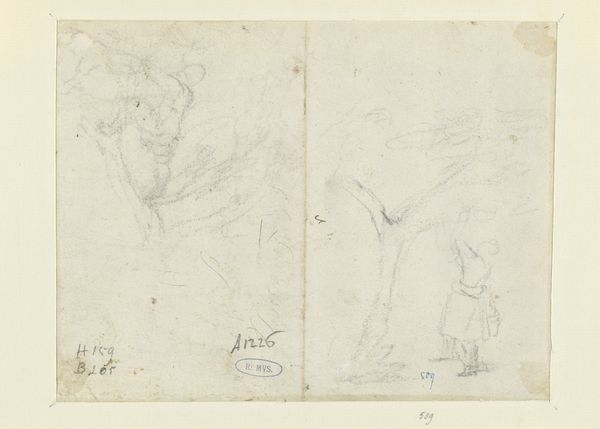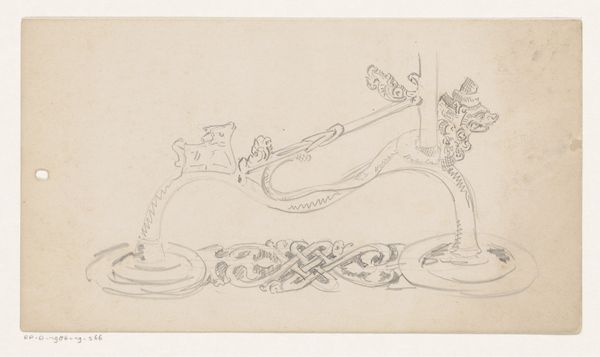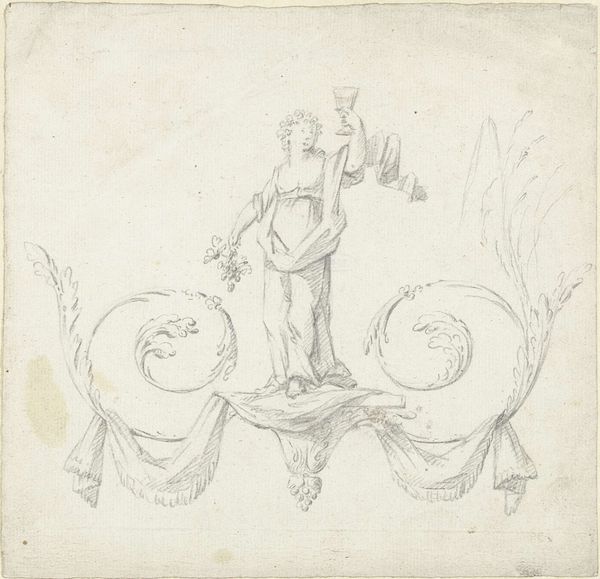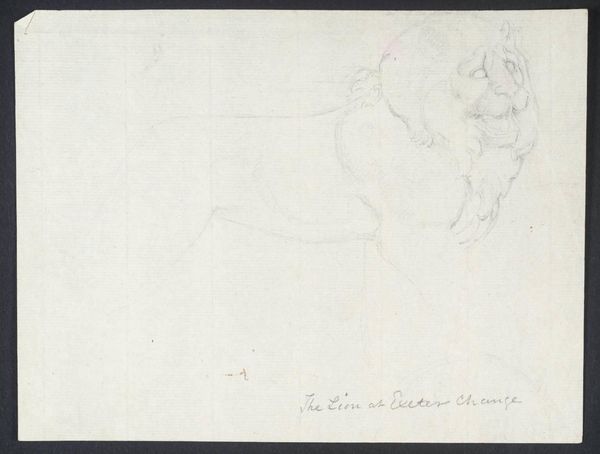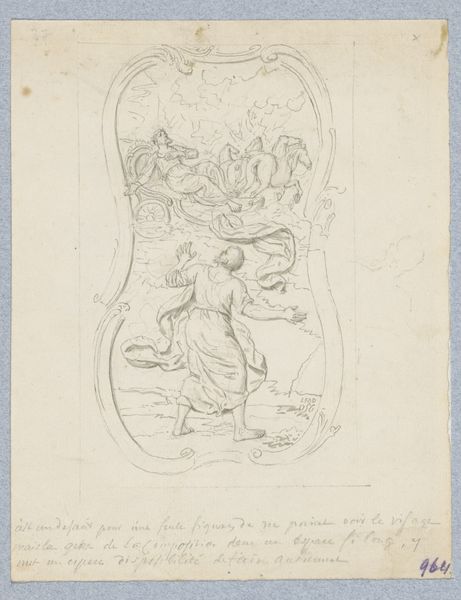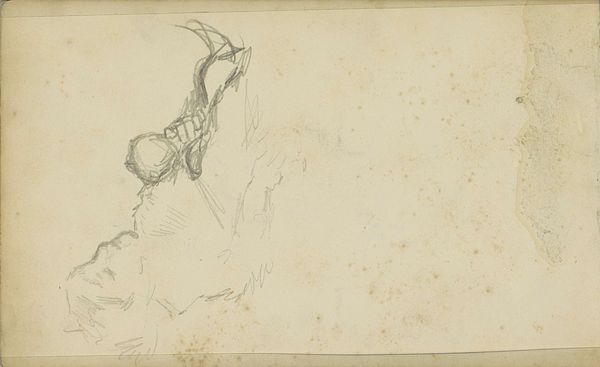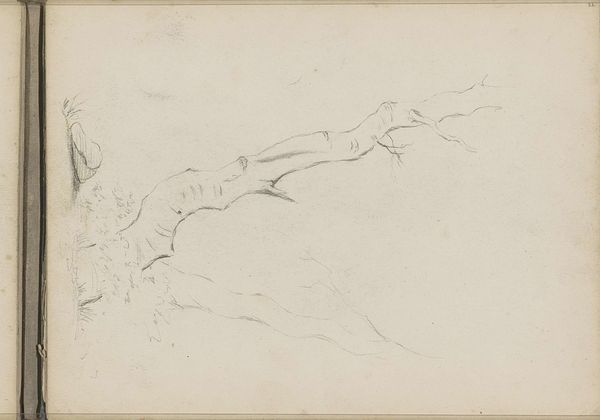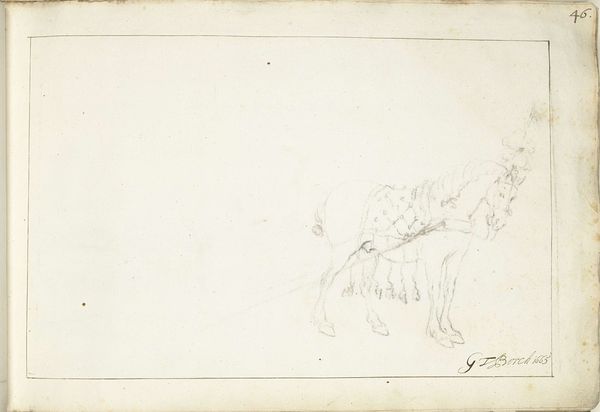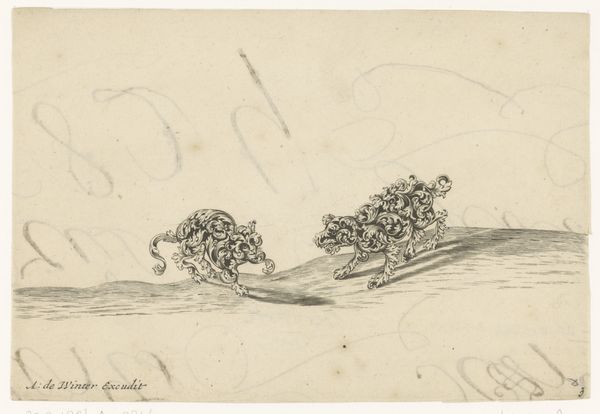
drawing, pencil
#
drawing
#
art-nouveau
#
pencil
#
symbolism
Dimensions: 153 mm (height) x 220 mm (width) (bladmaal), 92 mm (height) x 205 mm (width) (billedmaal)
Theodor Philipsen made this chalk sketch, sometime around 1900, on a piece of paper. Chalk is such a humble material, yet capable of conveying a huge amount. Look at how Philipsen uses it here. Notice how the chalk is applied to the paper's surface with varying degrees of pressure. In some areas, the lines are light and delicate, creating a sense of transparency and atmosphere, while in others, the chalk is applied more heavily, creating darker, more defined forms. You can see the energy in the artist's hand, and how he is building up the image layer by layer. As a medium, chalk allows for a direct, immediate connection between the artist's hand and the surface of the paper, and it can be easily erased or reworked, making it ideal for sketching and preliminary studies. Chalk enabled the artist to capture a fleeting moment, a transient idea, and this sketch is a testament to the power of humble materials. It reminds us that art doesn't always require elaborate tools or expensive materials, but instead, it’s about vision, skill, and intent.
Comments
No comments
Be the first to comment and join the conversation on the ultimate creative platform.
